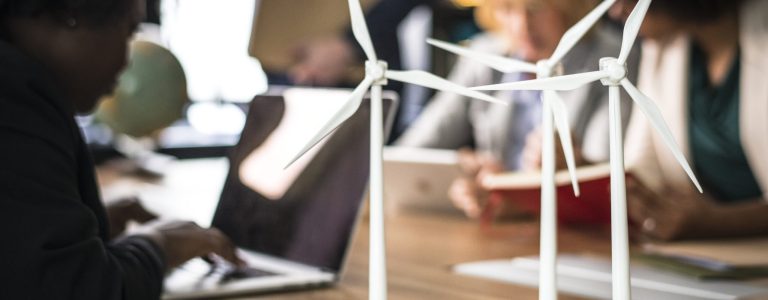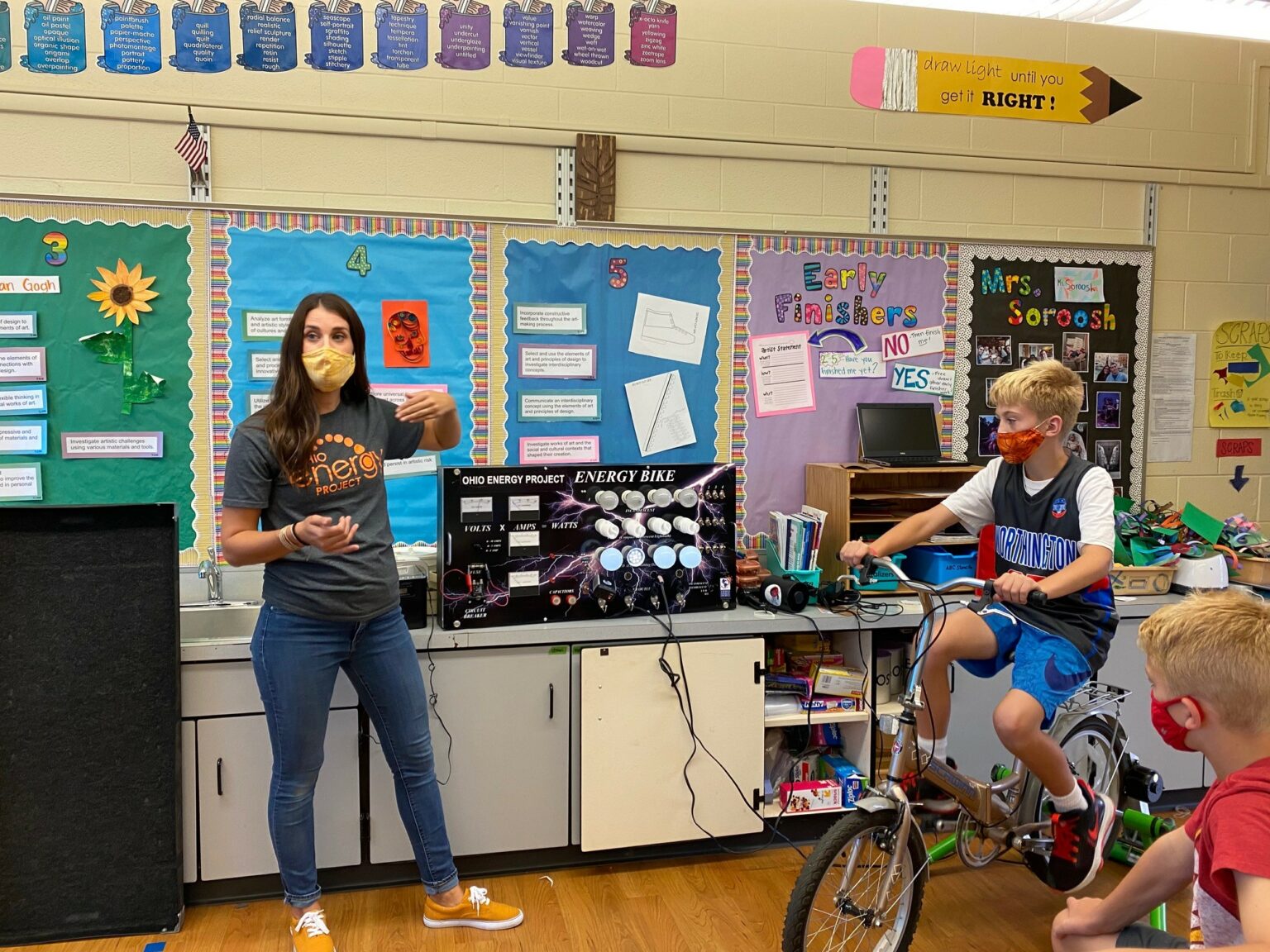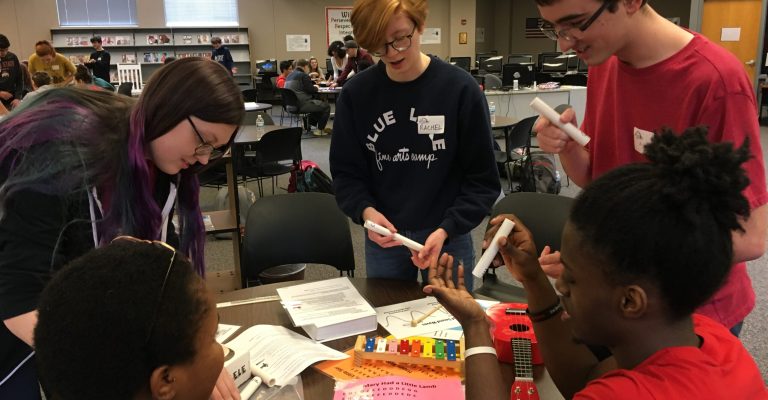On the third floor of the Worthington City Schools Administration building, there’s a small corner office where a passionate team of seven current and former educators collaborate through research, planning, and the creation of OEP programs and events. Well versed in elementary, secondary and even higher education curriculum, our team knows what students need, what teachers want and where science education should be headed. We know that teachers face an uphill battle when it comes to time, resources, and support. In many schools across the country, quality science education is sacrificed through testing preparation; often edging out what teachers know to be best practices.

Before sitting down to write this, I spent my morning at an East Columbus Elementary school, teaching fourth grade students about the magic behind electrical circuits and energy transformations. These students hopped on our Energy Bike, allowing them to experience their energy being transformed into light, heat, and sound. They saw the impact of energy conservation firsthand, as they compared their efforts to power the bike with LED (light emitting diode) and CFL (compact fluorescent) light bulbs to IL (incandescent) light bulbs. They built series and parallel circuits, powering small fans, lamps, and speakers through snap circuit kits. Forming a human sized circuit with Energy Batons, they learned about electrical conductors and how to identify insulators that block electricity.
They did all of this in their school gymnasium, on a Monday morning before noon.

While showing a small group how to light a lamp on their board through a simple series circuit, one of the fourth-grade students wondered out loud what kind of circuits power the lights in their school. He considered why wires may be more useful than the small plastic rods provided in his kit. He had also just come from the Energy Bike station and was armed with newfound knowledge about energy efficient light bulbs. He started making (lofty) suggestions to improve the cost efficiency of the light bulbs in the circuit he was creating. At the end of the program, I started to pack up our materials, when I was tapped on the shoulder and quietly told:
“I need more time.”
It was the same student from earlier, with an endless list of ideas. He wanted to finish creating the project he was modeling after the picture on his snap circuit box. That one simple plea- “I need more time” from an eager and engaged 10-year-old, has stuck with me all day. I wonder how often those words have been said and thought by students of all ages in a science class at some point?
In an ideal K–12 classroom, every student (and every teacher) would have the time and resources to be engaged long enough to consider themselves a scientist. Every student would be involved in personally relevant, inquiry-driven science learning. This kind of classroom experience, which invites students to observe, hypothesize, debate, experiment, and problem-solve, is not easy to facilitate. OEP has been successfully trying to help bridge this gap for teachers and students for three decades and counting, with no plans to slow down.
The Critical Need for Energy Literacy
One of Ohio Energy Projects’ core pillars is energy literacy. Our hope through OEP programming is that student’s engagement in hands on experiences will enhance their comprehension of how energy affects everything around them. From their food consumption, healthcare, transportation, communication abilities, and housing options. We want our students to thoroughly understand the vital role energy plays in their everyday lives. OEP is pushing young scientists to understand the far-reaching influence energy has in our world. And how it is so intricately woven into our personal, civic and social lives.
A Rich History
Founded in 1988, Ohio Energy Project has since facilitated thousands of students and teachers understanding and experience of the science of energy. Born out of the desire for student leadership training with the slogan “Kids Teaching Kids”, the organization was originally called the “Ohio NEED Project.” It included student workshops, professional development and as the name suggested, kids teaching kids in a leadership role. The first regional office was established in Cincinnati, Ohio and by 1995, Ohio NEED Project was renamed to its current title, Ohio Energy Project. Since the early days of OEP, the mission has remained the same- to inspire leadership and energy innovation within teachers, students and their communities.
As OEP’s programming expanded over the years, so did funding and the company’s reach across the state of Ohio. Just in the 2021-2022 year alone, OEP impacted more than 50,000 Ohio students in an array of programs ranging from elementary and secondary stem design challenges to a pilot energy efficiency program. OEP continues to provide teacher-training workshops where collaborative, in-depth professional development takes place. This training is grade level specific but also places the information in the context of science education that happens in subsequent grades. (And they are paid for their time). Our current team continues to develop curriculum with and for K–12 educators, while also providing classroom materials and resources, at no cost to the teachers.
Setting the Standard
One incredibly important aspect of OEP’s programming is the alignment to Ohio’s Standards. If you were to take a deep dive into OEP’s Canvas courses, where the materials and curriculum for three of our seven main programs are housed for teacher access, you would find one thing that rings true for all. Every aspect of our programs has been handcrafted by teachers, for teachers to align with Ohio’s Learning Standards. Our programs reflect what all students should know and be able to do to become scientifically literate citizens. They provide students with the knowledge and skills they need for the 21st century workforce and higher education. As the Next Generation Science Standards make their way into classrooms across the country, OEP is well equipped to begin formally aligning our programs with them as well. That’s because much of what OEP has been doing for decades, already lends itself to the expectation that students will interact with scientific phenomena and record and analyze their data.
Every e3 Smart teacher can describe the impact the yearlong program had on their students. Watch a fifth-grade teacher facilitate the STEM Design Challenge with their class. Ask any teacher who has participated in our professional development over the years to explain the value of their own learning experiences. We know that any of our teachers can tell you that no matter the program, no matter the grade, their experiences with OEP are rich in content and practice. We help their students gain more confidence investigating the world around them. And just as the NGSS aims to, OEP programs help students “develop key skills—communication, collaboration, inquiry, problem solving, and flexibility—that will serve them throughout their educational and professional lives.”

OEP will continue to support science classrooms across Ohio with the materials and resources teachers need. All children deserve an education that allows them the time to make these scientific connections, and every community deserves to have its citizens engaged in this way. We hope the pending future addition of the NGSS in Ohio schools will help give back science teachers the time they need to teach their content and teach it well. And hopefully our students, who are asking for that time too, will receive it.
References
State and District Implementation | Next Generation Science Standards. (n.d.).
https://www.nextgenscience.org/state-and-district-implementation/state-and-district-implementation
Image retrieved from:
Freepik.com
Amanda Breckenridge, M.Ed is a former elementary teacher turned education program coordinator and freelance writer.
Amanda Breckenridge


